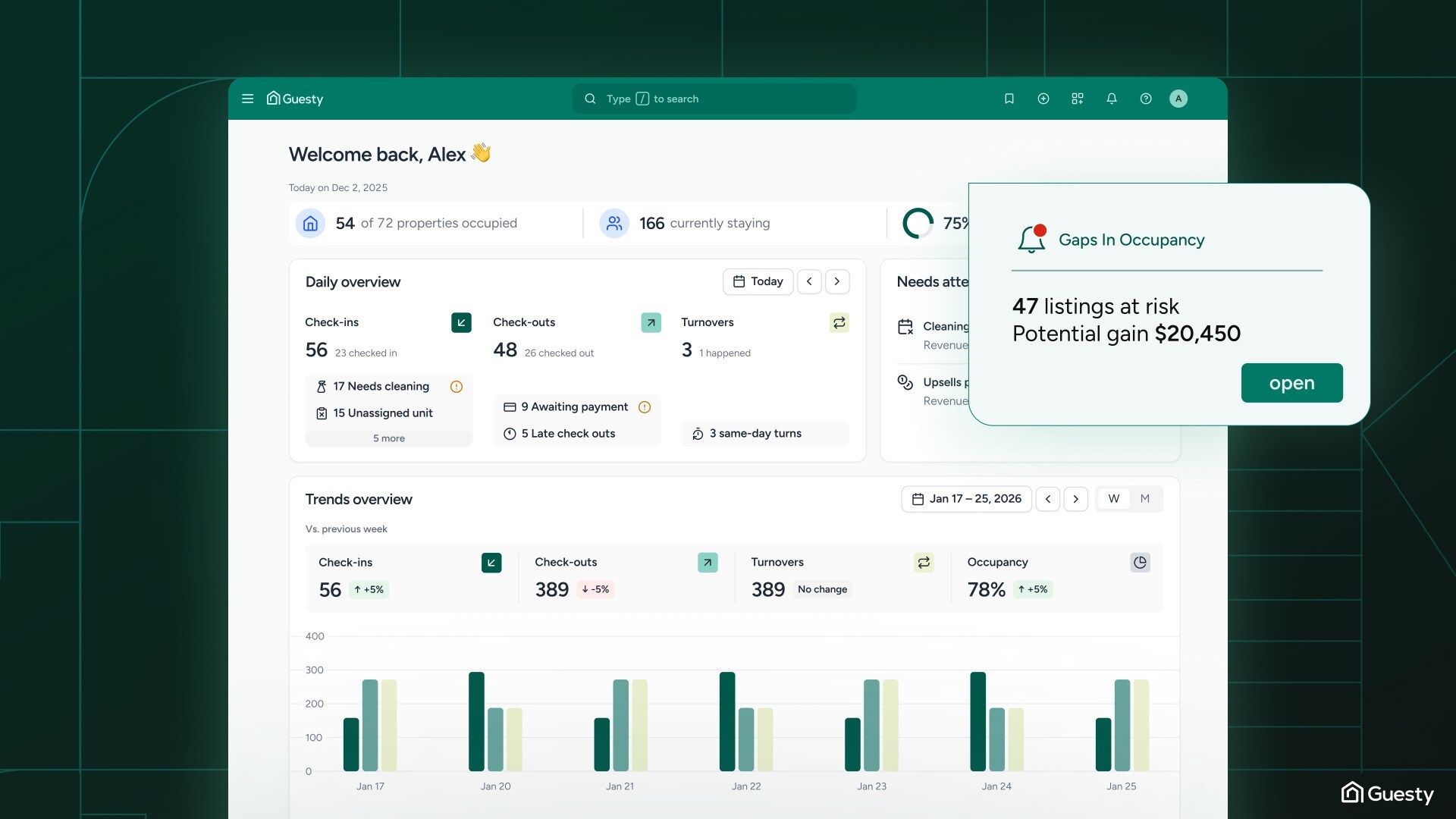After covering the power of the short-term rental (STR) strategy and how 100% bonus depreciation can unlock massive tax savings for high-income W-2 earners, it’s just as important to understand what happens on the back end, especially when you sell a property.
With proper planning, STR owners can generate significant paper losses to offset active income, often resulting in tens of thousands of dollars in tax savings. But eventually, when the property is sold, there’s a catch that investors are often surprised by: depreciation recapture.
What Is Depreciation Recapture?
Depreciation recapture refers to the portion of gain on the sale of a rental property that must be included in taxable income, specifically the depreciation you previously deducted. The IRS requires you to "recapture" those deductions and pay tax on them when you sell, depending on how the property components were originally depreciated.
Here’s how it generally breaks down:
- §1245 Property (e.g., appliances, flooring, fixtures): Depreciation is taxed at ordinary income rates, up to 37%.
- §1250 Accelerated Depreciation (e.g., land improvements): Also taxed at ordinary rates on any amount in excess of straight-line depreciation.
- §1250 Unrecaptured Depreciation (e.g., building structure): Taxed at a maximum rate of 25%.
- Capital Gain (appreciation beyond original cost basis): Taxed at up to 20%, depending on income level.
A Simplified Example
Assume an investor purchases a short-term rental property in 2022 for $600,000. Of that purchase price, $100,000 is allocated to land (non-depreciable), leaving $500,000 in depreciable basis.
A cost segregation study is performed, which results in the following breakdown:
- 18% of the purchase price ($108,000) is allocated to 5-year personal property (e.g. furniture, appliances)
- 7% ($42,000) is allocated to 15-year land improvements (e.g. landscaping, driveways)
- The remaining 75% ($350,000) is allocated to 39-year building structure
Because 100% bonus depreciation was in effect, the investor claimed immediate deductions on the 5 and 15 year property, totaling $150,000 in year one. This loss was used to offset W-2 income, saving roughly $48,000 in federal taxes assuming a 32% marginal bracket.
What Happens at Sale
Let’s say the investor sells the property three years later for $800,000.
The property was originally purchased for $600,000, with $100,000 allocated to land and the remaining $500,000 to depreciable basis. Of that, $150,000 was depreciated immediately through bonus depreciation, and an additional $26,922 of straight-line depreciation was taken on the 39-year building over the course of three years. This results in total depreciation claimed of $176,922.
With that, the adjusted basis becomes $423,078 ($600,000 – $176,922). The resulting capital gain on sale is $376,922 ($800,000 – $423,078).
Upon sale, the taxpayer is subject to depreciation recapture rules. The $108,000 previously deducted for 5-year personal property is taxed as §1245 recapture at ordinary income tax rates. The $42,000 in 15-year land improvements is also taxed at ordinary rates under §1250 accelerated depreciation recapture. The remaining $26,922 of straight-line depreciation from the 39-year structure is taxed as §1250 unrecaptured gain at a maximum 25% rate. Assuming a 32% marginal tax bracket, the total tax due just on the depreciation recapture would be approximately $54,730. The rest, roughly $200,000, represents the capital appreciation and is taxed at capital gains rates up to 20%. In our example, the capital gains tax would be about $30,000, leading to a total tax liability of roughly $84,730 between depreciation recapture and capital gains tax.
This example shows how much of the total gain can be taxed at higher rates due to depreciation recapture, especially when bonus depreciation is involved. Fortunately, there are planning strategies that can be used to reduce or defer this tax liability, which are outlined in the following sections.
Three Strategies to Help Mitigate Depreciation Recapture
Once a property is sold, depreciation recapture becomes part of the equation. But with the right planning, that tax liability doesn’t have to be set in stone. Here are three strategies that investors can use to reduce or defer the tax bill that comes with recapture.
1. Use Passive Activity Loss (PAL) Carryforwards
One of the most overlooked strategies involves using passive activity losses that were previously suspended. These are losses that couldn’t be used in prior years due to passive loss limitations and have been sitting on the return waiting for the right opportunity.
It’s worth reviewing Form 8582 from prior year tax returns to see whether any PAL carryforwards exist. These can be powerful in reducing or eliminating the recapture income reported on the current year’s return.
2. Complete a 1031 Exchange
Another way to defer both capital gains and depreciation recapture is through a Section 1031 exchange. This allows an investor to sell one investment property and reinvest the proceeds into another like kind property, without triggering immediate tax.
To qualify for full deferral, the investor must:
- Use a qualified intermediary to hold the proceeds from the sale
- Identify replacement property within 45 days
- Close on the new property within 180 days of the original sale
As long as the replacement property is of equal or greater value and all proceeds are reinvested, both capital gains and depreciation recapture are deferred until the next sale. This strategy is especially useful for investors who are ready to scale into a bigger property while pushing the tax liability further down the road.
3. Leverage a “1031 Lite” Using Cost Segregation
In cases where a formal 1031 exchange isn’t feasible, whether due to tight timelines or lack of suitable replacement properties, another approach is to acquire a new property in the same tax year and perform a cost segregation study on that purchase.
The idea is simple: the investor doesn’t defer the sale through a 1031 exchange but instead triggers a large bonus depreciation deduction on a new property to offset the taxable gain, including depreciation recapture, from the original sale.
This strategy allows for more flexibility with timing and property selection. It doesn’t require a qualified intermediary or specific identification windows, making it a useful alternative when the stars don’t align for a full 1031 exchange.
Final Thoughts
Depreciation recapture can feel like an unwelcome surprise for investors who aren’t expecting it, especially after years of enjoying tax savings from bonus depreciation. But with proper planning, the impact can often be reduced or deferred entirely.
It’s also important to keep the time value of money in mind. Even if depreciation is eventually recaptured, taking large deductions up front allows you to reduce your tax bill early, reinvest those savings, and make your money work harder over time. The ability to recycle capital and accelerate wealth-building often outweighs the future tax liability tied to recapture.
The examples and strategies provided here are meant to offer a high-level overview. There are many nuances based on timing, income level, property type, and your overall tax picture. As always, it’s important to work with a qualified tax advisor to understand how these concepts apply to your specific situation and goals.

.webp)


